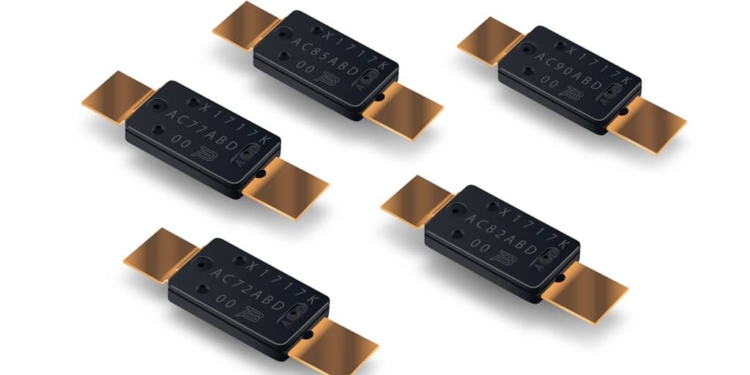Source: Bourns news
RIVERSIDE, Calif., April 24, 2018 – Bourns, Inc., a leading manufacturer and supplier of electronic components, today expanded its industry-leading line of miniature resettable thermal cutoff (TCO) devices with a new series that delivers breakthrough current capacity in a miniature TCO device.
The new Bourns® Model AC Series builds on the success of the Model AA series launched in January 2017 offering multiple improved features to meet the next-generation protection needs of denser, higher capacity Lithium-Ion (Li-ion) battery cells.
Going beyond the Model AA series four trip temperature options, from 72 °C to 85 °C, the new Model AC series offers a fifth option of 90 °C. The latest option is capable of carrying up to 20 A at 60 °C, making it the highest current-carrying TCO device Bourns offers. These new protection devices also deliver extremely low impedance/resistance (2 mΩ max.) while helping battery pack designers save valuable design space and weight. To achieve this, the new AC series is 0.12 mm thinner and 16 percent lighter than the existing Model AA series.
The lighter, smaller and higher capacity advantages provided by Model AC TCO devices help designers extend Li-ion cell usage beyond the traditional laptop, tablet and smart phone applications to power tools, electric vehicles, e-bikes and grid storage applications.
The Model AC Series from Bourns is available now and is RoHS compliant* and halogen free**. As a pricing reference, Model AC72ABD is priced at $0.73 each in 3,000 piece quantities. For more detailed product information, please see: www.bourns.com/products/circuit-protection/mini-breakers.
Bourns® and the Bourns logo are registered trademarks of Bourns, Inc. and may be used only with the permission of Bourns and proper acknowledgement. Other listed names and brands are trademarks or registered trademarks of their respective owners.
* RoHS Directive 2015/863, Mar 31, 2015 and Annex.
** Bourns considers a product to be “halogen free” if (a) the Bromine (Br) content is 900 ppm or less; (b) the Chlorine (Cl) content is 900 ppm or less; and (c) the total Bromine (Br) and Chlorine (Cl) content is 1500 ppm or less.
































